Welcome back for part two in our October Author Interview series. Last week, we talked about these eight awesome authors’ new books. Today, we’re discussing their fantastic cover art as well as the directions they hope to see their favorite genres head in the future.
So let’s take it away!
While there’s a wide-range of wonderful titles being featured as part of this interview series, one thing all your books share is that your cover art is incredible. Who designed your cover, and how much input did you have in the process? How in particular do you feel the cover reflects the overall feel of the book?
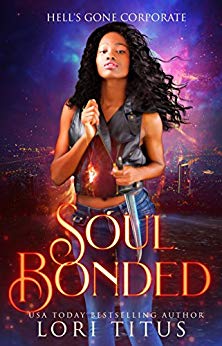 LORI TITUS: That’s a great question! This cover is part of the reason I decided to go ahead and write Soul Bonded.
LORI TITUS: That’s a great question! This cover is part of the reason I decided to go ahead and write Soul Bonded.
Andreea Vraciu had this cover posted on her premade store. I’ve bought other covers from her before, but when I saw this one, it felt perfect for Natasha. I bought it and got to work on the story right away.
I’ve been lucky to have some really talented cover artists through the years. The cover is the first impression your reader has of your book, and it can do so much to set the mood for the reader.
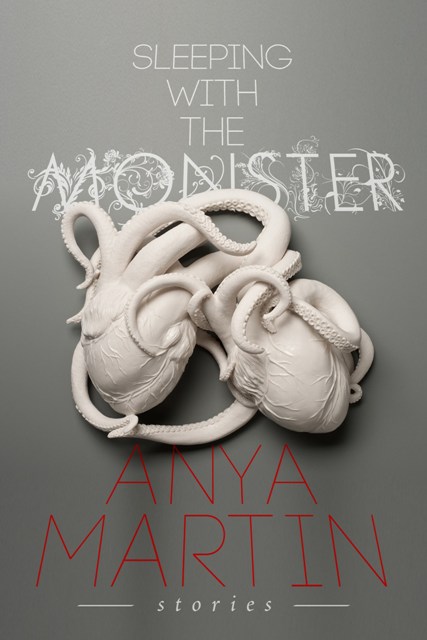 ANYA MARTIN: The cover art for Sleeping with the Monster is a photo of a porcelain sculpture by the amazing Kate MacDowell who is known for her wonderfully bizarre works merging animal parts and human organs. My publisher Steve Berman suggested it and I thought the entwined hearts with tentacles were not only a compelling image but a great fit metamorphically for my stories. Her Website is www.katemacdowell.com if you want to see more. I’ve been extremely fortunate to have my fiction paired with a number of fantastic female artists including Jeanne D’Angelo (Grass chapbook, Dim Shores), Mado Peña (“Stuffed Bunny in Doll-Land” in Womanthology) and Kim Bo Yung (Passage to the Dreamtime chapbook, Dunhams Manor Press).
ANYA MARTIN: The cover art for Sleeping with the Monster is a photo of a porcelain sculpture by the amazing Kate MacDowell who is known for her wonderfully bizarre works merging animal parts and human organs. My publisher Steve Berman suggested it and I thought the entwined hearts with tentacles were not only a compelling image but a great fit metamorphically for my stories. Her Website is www.katemacdowell.com if you want to see more. I’ve been extremely fortunate to have my fiction paired with a number of fantastic female artists including Jeanne D’Angelo (Grass chapbook, Dim Shores), Mado Peña (“Stuffed Bunny in Doll-Land” in Womanthology) and Kim Bo Yung (Passage to the Dreamtime chapbook, Dunhams Manor Press).
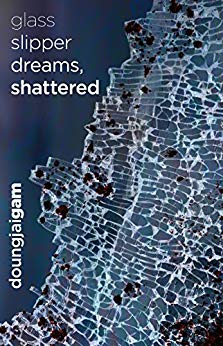 DOUNGJAI GAM: my cover was done by Robert Ford of Whutta Design—he’s designed most (if not all) of the covers for LampLight magazine. I had zero input; it was all Jacob and Bob because I had no idea what I wanted. I saw a few designs and pointed to the one I ended up with and asked for more blood, haha. I’m thrilled with the work Bob did and it conveys exactly what I didn’t realize I had wanted for the cover—the feeling of being broken and bleeding yet somehow managing to hold it all together.
DOUNGJAI GAM: my cover was done by Robert Ford of Whutta Design—he’s designed most (if not all) of the covers for LampLight magazine. I had zero input; it was all Jacob and Bob because I had no idea what I wanted. I saw a few designs and pointed to the one I ended up with and asked for more blood, haha. I’m thrilled with the work Bob did and it conveys exactly what I didn’t realize I had wanted for the cover—the feeling of being broken and bleeding yet somehow managing to hold it all together.
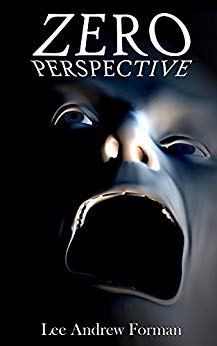 LEE FORMAN: When I first saw the concept design, I knew straight away it was the right cover for my book. I was shown a variety of samples at once, and it stood out immediately. Nina D’Arcangela of Sirens Call Publications and Pen of the Damned did my cover. She did an amazing job of capturing what the book is in one single image. And as I imagine is the case with a lot of authors, it’s completely different than my original idea. I had a lot of input in the process, but ultimately I liked what Nina came up with more than any idea I had. Although I will say, the design of the title originates from my original idea for the cover, so there’s still a piece of that in there. The cover reflects the feel of the book exceptionally well. It has elements of all the ideas conveyed in the story. It represents warped reality, skewed perception, psychological horror, and something that could be human, or not so human. The anguish the characters experience in the story really shows on the cover as well.
LEE FORMAN: When I first saw the concept design, I knew straight away it was the right cover for my book. I was shown a variety of samples at once, and it stood out immediately. Nina D’Arcangela of Sirens Call Publications and Pen of the Damned did my cover. She did an amazing job of capturing what the book is in one single image. And as I imagine is the case with a lot of authors, it’s completely different than my original idea. I had a lot of input in the process, but ultimately I liked what Nina came up with more than any idea I had. Although I will say, the design of the title originates from my original idea for the cover, so there’s still a piece of that in there. The cover reflects the feel of the book exceptionally well. It has elements of all the ideas conveyed in the story. It represents warped reality, skewed perception, psychological horror, and something that could be human, or not so human. The anguish the characters experience in the story really shows on the cover as well.
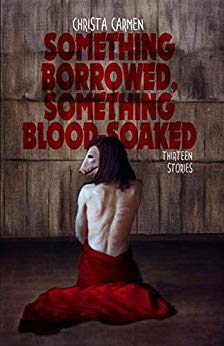 CHRISTA CARMEN: My cover was designed by Unnerving’s Eddie Generous. I had input in the process in that one of the stories in Something Borrowed, Something Blood-Soaked, “Lady of the Flies,” prompted Eddie to recall a piece he’d worked on in the past, and upon revising it, he felt it would be representative of both that story, and the collection as a whole. As far as how the cover reflects the overall feel of the book, I have to admit, I had a moment of doubt a few months before the collection’s release, that the cover represented the more hardcore horror stories in the book, like “Red Room,” “Lady of the Flies,” and “The Girl Who Loved Bruce Campbell,” and would perhaps not appeal as much to those consumers of more psychological horror who would enjoy stories like “Flowers from Amaryllis,” “Wolves at the Door and Bears in the Forest,” and “This Our Angry Train.” But this doubt could be likened to any felt before embarking upon a novel experience, and I was, of course, wrong, as the cover—dark, beautiful, and perfectly macabre as it is—has been praised by hardcore and psychological horror readers alike, as well as commended for being generally eye-catching and gorgeously haunting.
CHRISTA CARMEN: My cover was designed by Unnerving’s Eddie Generous. I had input in the process in that one of the stories in Something Borrowed, Something Blood-Soaked, “Lady of the Flies,” prompted Eddie to recall a piece he’d worked on in the past, and upon revising it, he felt it would be representative of both that story, and the collection as a whole. As far as how the cover reflects the overall feel of the book, I have to admit, I had a moment of doubt a few months before the collection’s release, that the cover represented the more hardcore horror stories in the book, like “Red Room,” “Lady of the Flies,” and “The Girl Who Loved Bruce Campbell,” and would perhaps not appeal as much to those consumers of more psychological horror who would enjoy stories like “Flowers from Amaryllis,” “Wolves at the Door and Bears in the Forest,” and “This Our Angry Train.” But this doubt could be likened to any felt before embarking upon a novel experience, and I was, of course, wrong, as the cover—dark, beautiful, and perfectly macabre as it is—has been praised by hardcore and psychological horror readers alike, as well as commended for being generally eye-catching and gorgeously haunting.
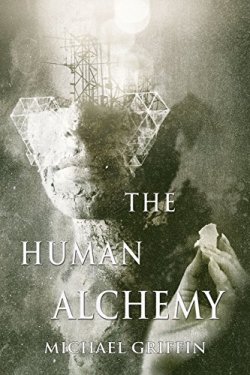 MICHAEL GRIFFIN: Both my collections have cover art by Jarek Kubicki, an artist and graphic designer from Poland. I love both covers, and feel very lucky to have found art that I feel corresponds so closely with the tone and feel of the writing. I love the balance of beautiful, almost Gothic elegance with dark, gritty textures. Scott R. Jones did the layout of both covers, and deserves credit as well.
MICHAEL GRIFFIN: Both my collections have cover art by Jarek Kubicki, an artist and graphic designer from Poland. I love both covers, and feel very lucky to have found art that I feel corresponds so closely with the tone and feel of the writing. I love the balance of beautiful, almost Gothic elegance with dark, gritty textures. Scott R. Jones did the layout of both covers, and deserves credit as well.
In choosing cover art, I had as much input as I could’ve hoped for. While planning The Lure of Devouring Light, Ross Lockhart of Word Horde asked me to make a wish list of three artists to consider for the cover, and Kubicki was at the top of my list. Ross looked at Kubicki’s online portfolio, suggested an image he liked very much and asked what I thought. I said “Yes, wonderful, if you can get it!” Ross went out and got it.
For The Human Alchemy we agreed we’d like something that felt similar to the first book. While I looked at other artists just in case, I was delighted when Ross said he’d see if we could get 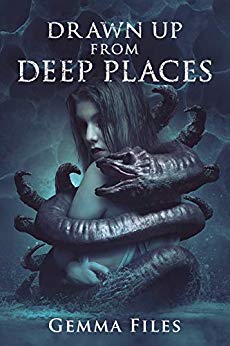 another piece from Kubicki. That’s how it worked out, and I love that the covers make the books look like they go together. My satisfaction level with both covers is as high as it could possibly be.
another piece from Kubicki. That’s how it worked out, and I love that the covers make the books look like they go together. My satisfaction level with both covers is as high as it could possibly be.
GEMMA FILES: Trepidatio crowd-sourced both collection covers, and I love them a lot. I was very involved in the sorting process, which was wonderful. CZP, on the other hand, usually relies on the brilliant Eric Mohr to design almost all of their covers—he’s certainly designed all mine, and they’re perfect. I’ve been very lucky thus far.
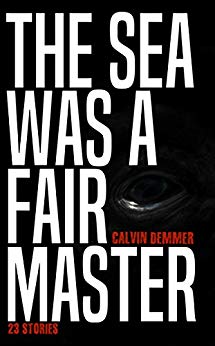 CALVIN DEMMER: The editor over at Unnerving designed both the eBook and paperback covers. I had a lot of say, but what also worked well is that he had read and worked on the stories before designing the cover. So, when he came back to me with ideas, he had a good feel of the collection. I think with it being a flash fiction there was a quite a bit of room to have some fun, and I love how the black eBook cover and white paperback cover kind of represent the darkness and lightness in the stories. I think together they perfectly balance the horror and heart in the collection.
CALVIN DEMMER: The editor over at Unnerving designed both the eBook and paperback covers. I had a lot of say, but what also worked well is that he had read and worked on the stories before designing the cover. So, when he came back to me with ideas, he had a good feel of the collection. I think with it being a flash fiction there was a quite a bit of room to have some fun, and I love how the black eBook cover and white paperback cover kind of represent the darkness and lightness in the stories. I think together they perfectly balance the horror and heart in the collection.
All of you write horror and/or weird fiction. What are your hopes for the future of these genres? How do you see the evolution of horror and weird fiction in the years to come, and if you could have what you envision for publishing, what would you like to see more or less of in the genres? In that same vein, which authors in horror and weird fiction do you wish more people were reading right now?
MICHAEL GRIFFIN: I think the horror genre is strong, and in no danger of going away. Weird fiction is flourishing, and we’re in the middle of a time when an incredible amount of very strong work is being done. I expect to see many writers from this current generation find a wider audience, even if that means some shift focus a bit in order to accomplish this. Already we’re seeing a few writers make the jump to big, mainstream publishers, or into having films made of their work. Even if not everyone can make that huge commercial breakthrough, I still think the scene is bursting with skilled and wildly imaginative writers working at a very high level. There’s no question that in the coming years we’ll continue to experience a wonderful bounty of beautiful, varied and well-crafted weird and disturbing literature.
I suppose I would like to see the really unique and risk-taking work receive greater focus and popularity, as opposed to the work treading more familiar and comfortable ground, such as Lovecraftian pastiche, zombies, and traditional monsters. Even so, there’s room at this party for all of us.
It’s impossible to make a good list of all the writers who deserve more attention, because there are so many. I tend to believe that top quality work eventually rises to the top, so a writer overlooked today, if they can keep on working, they’ll begin to gain the recognition they deserve. For example, a few years ago people often said John Langan needed more attention, despite getting published in a lot of high profile anthologies, and appearing in many “year’s best” lists. Now his book The Fisherman has achieved wide recognition, and he seems poised to soon make that next jump from indie publishing to greater and wider commercial success.
A writer I always mention in response to questions like this is S.P. Miskowski. Her work is strong enough to merit that kind of jump to a wider readership. I’m not saying it’s just a matter of waiting a few years until she gets better, because she’s already that good. Her writing is not only smart and real, but also entertaining and easy to read. I’m not sure what causes a writer like that to finally make the jump to a much wider audience, but maybe it just takes coming up with the right story concept at the right cultural moment.
ANYA MARTIN: It’s an exciting time to be writing horror and especially Weird fiction, because of the number of new voices, and how it is being redefined by diverse authors (women, people of color, LBGTQ). What we’re seeing are truly “different” stories that are challenging editors to re-evaluate their expectations for what is a good horror story or Weird tale. The emergence of Michael Kelly’s Year’s Best Weird Fiction series, now in its fifth year, also has been pivotal. I’m proud to have been able to amp the signal for many of these authors through The Outer Dark podcast and symposium with Scott Nicolay. And I’m humbled to be writing among side such badass women authors as Livia Llewellyn, Kristi DeMeester, Nadia Bulkin, Damien Angelica Walters, Carmen Maria Machado, Kelly Link, Helen Marshall, Rios de la Luz, Silvia Moreno-Garcia, Selena Chambers, Molly Tanzer, S.P. Miskowski, Chesya Burke, Nicole Givens Kurtz, my Lethe Press-mate Sonya Taaffe, poet Christina Sng and yourself, Gwendolyn Kiste. These names roll off my tongue but I know I am forgetting many simply because there are so many now.
In upcoming years, I see both horror and the Weird only becoming even more diverse in authorship and perspective. This trend predates the current political reality in the United States where the world itself is increasingly Weird, but it certainly also feels like The Weird is the literature of this time. That being said, I’ve heard some writers and readers worry that Weird fiction is being diluted because so many are calling their work “Weird.” I don’t think we’re at a saturation point yet, but I do think it’s something to be mindful of. I hope authors will strive not to be Weird simply for Weird’s sake but utilize The Weird as a mode that can be highly effective for exploring certain aspects of the human condition and the “objects” that make up the world in which we live. In addition to the women I already mentioned, a few more “emerging” Weird/horror authors who have impressed me include Doungjai Gam Bepko and Brookelynne Warra.
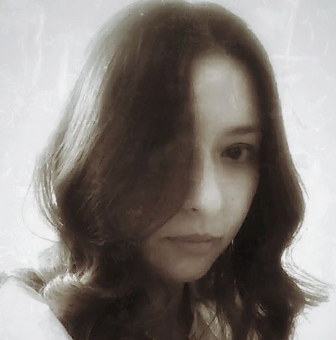 DOUNGJAI GAM: horror has had a wonderful resurgence in the last few years but I do wish it was seen as more than that genre that’s sitting out in the gutter drinking while all the cool kids are partying inside (though I think we all *really* know where the cool kids are hanging out 😉 ). but those of us in dark and weird fiction, in horror and so on…we’ve all heard the comments: “I don’t watch/read scary stuff.” “oh, you write horror? are you a serial killer?” and other insulting shit like that. the folks in the horror and weird fiction communities are incredibly kind and supportive. we get each other, and that’s a comfort when your coworkers or family or other writers don’t understand.
DOUNGJAI GAM: horror has had a wonderful resurgence in the last few years but I do wish it was seen as more than that genre that’s sitting out in the gutter drinking while all the cool kids are partying inside (though I think we all *really* know where the cool kids are hanging out 😉 ). but those of us in dark and weird fiction, in horror and so on…we’ve all heard the comments: “I don’t watch/read scary stuff.” “oh, you write horror? are you a serial killer?” and other insulting shit like that. the folks in the horror and weird fiction communities are incredibly kind and supportive. we get each other, and that’s a comfort when your coworkers or family or other writers don’t understand.
what would I love to see more of? in a word—DIVERSITY. there’s so many stories out there to be told by folks that don’t fit the straight white mold. I’m Asian, and the number of horror writers who share that genetic makeup with me…yeah, there’s not a whole lot. this is not a “write what you know” PSA—I encourage everyone to write beyond their comfort zone! but for chrissakes, if you’re a straight white guy writing gay or POC characters, maybe have someone from said community give you a beta read to make sure you’re doing it right. the devil is in the tiniest of details and if you get it wrong, you’re going to get called out on it. do the research, it’s not that hard. as for who I wish people were reading more of…where to begin? Larissa Glasser is amazing. Gwendolyn Kiste and Farah Rose Smith are both wonderful, as are Morgan Sylvia, Matthew Bartlett, and KL Pereira. and oh! Angela Slatter! I adore her short stories.
LEE FORMAN: I believe horror and weird fiction will continue to thrive and grow. I’m seeing a lot of great new dark fiction coming from authors both new to the scene and long-time household names. I see the genres evolving by expanding and mingling with one another, to eventually create new sub-genres. Personally I’d love to see more creature stories. But I’m just a sucker for monsters! As for authors I’d like to mention, Bentley Little comes to mind. His work is a bit more bizarre and obscene than a lot of other fiction I’ve read. It definitely gives him an original edge. If you haven’t read Bentley Little, and you can handle some not-so-acceptable stuff, I highly recommend him.
LORI TITUS: I hope to see the continuation to interest! We’re really at a peak with horror/weird fiction right now, and it’s up to us creators to keep inventing content that people are intrigued by. If there was anything I would like to see less of, it would just be the sort of copy-cat stories we see sometimes. I think that’s a problem in any genre, but it’s been very transparent in horror/paranormal fiction. We all have something different we can bring to the game if we work at it.
If anything, I would like to see some indie and hybrid authors get more of their due. I have a long line of people that more readers should show love for but I’ll break it down to a few: Deanna Richmond, Kenya Wright, Zin Rocklyn, Tina Glasneck, and Sumiko Saulson.
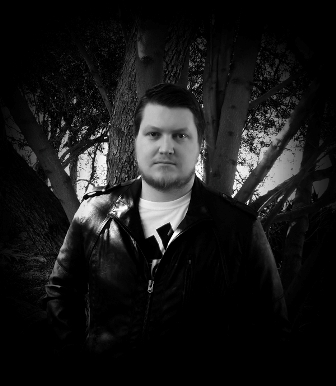 CALVIN DEMMER: I don’t think there is necessarily any trope or style I’d want to see more or less of. Every time I think like that, someone will come up with some new way of looking at the trope, or a story that fits a certain style perfectly. I have noticed a trend in more cerebral horror, stories crafted with intelligence and meaning as opposed to shock for shock’s sake. I think it’s really the originality that impresses me most. Writers keep finding ways to create new worlds, monsters, scenarios, and also ways to spice up old tropes. I’m hopeful the originality keeps going and that there continues to be more diverse voices and stories, as I think these have been big reasons why horror has had a bit of a comeback over the last few years.
CALVIN DEMMER: I don’t think there is necessarily any trope or style I’d want to see more or less of. Every time I think like that, someone will come up with some new way of looking at the trope, or a story that fits a certain style perfectly. I have noticed a trend in more cerebral horror, stories crafted with intelligence and meaning as opposed to shock for shock’s sake. I think it’s really the originality that impresses me most. Writers keep finding ways to create new worlds, monsters, scenarios, and also ways to spice up old tropes. I’m hopeful the originality keeps going and that there continues to be more diverse voices and stories, as I think these have been big reasons why horror has had a bit of a comeback over the last few years.
There are so many talented authors out there that deserve to be read. I can’t name them all, but a few that I have read recently are: Philip Fracassi, Maria Haskins, Lydian Faust, Sarah Read, Somer Canon, Michelle Garza, Melissa Lason, Brian Fatah Steele, Karen Runge, Christa Carmen, Nadia Bulkin, Jessica McHugh, Christina Sng, Tim Meyer, and Mike Thorn.
GEMMA FILES: Less gatekeeping, that’d be good, but also less “death of the author”/“this author is a hideous trash fire and should be avoided for all time because they are bad and should feel bad and make me feel bad,” too. I’ve been rightly accused of being a rampant populist with a garburator brain, and I think that is in fact true, in that I seem to find something entertaining and useful in almost everything I consume. Sometimes the useful thing is me making a note about what not to do, or what to do better, but sometimes the useful thing is me going “oh, awesome—I’d have done that differently, so let’s sit down and sketch a bit before I forget how my version of that idea would have gone.” And sometimes it’s just something I want to steal and build something else around. Like Stephen King, I’m not proud.
Maybe it’s the critic in me, but I really try to distinguish between my own personally subjective reactions/opinions about something and my objective analysis of something. I’m put in mind of a conversation I recently had about Ari Aster’s film Hereditary, in which I found myself saying: “Hereditary is definitely a movie whose plot spins on internalized misogyny being used by women against women. It’s part of what makes it so upsetting. Agree to disagree that that means the movie itself is misogynist, let alone that that means the creators who made it are misogynists…[not to mention t]he fact just because that a film isn’t what you wanted it to be/wish it were doesn’t mean that it can’t be a carefully constructed object, which Hereditary very much is.” I feel that way about a lot of stuff.
In other words, is depiction really endorsement, and does depiction of what you wouldn’t personally endorse always cancel out merit? Shit, I hope not, considering some of the things I’ve written about. Then again, do I get to police other people’s reactions? Nope. I think the main thing I’m kicking against here isn’t (obviously) the idea of unpacking racism and patriarchy and trying to open up a worldview that goes far beyond the supposed North American cis white straight guy POV default, of bringing intersectionality to the table and owning our own shit enough to call ourselves on it and check ourselves before we wreck ourselves, but the very idea of received wisdom: that impulse to go “Oh, well, of course everybody knows/thinks/believes or should know/think/believe [blah blah blah].” To quote Thor Odinsson: “Yeah, but do they? Really?”
So yeah, the world is shit right now and maybe it always was, but there are still plenty of reasons to keep going aside from entropy—and I still believe that nothing is completely without merit or usefulness, even if only as a really good bad example. I’m not saying we should hug and debate Nazis or stop speaking truth to power whenever possible, but a lot of the time, it seems like we get all snarled up cannibalizing each other rather than the people and issues we should really be directing the full virulent stream of our creativity against. So “agree to disagree” and move on remains my standard whenever people I respect are talking about stuff, and it really helps when I’m trying get my work done.
As for people more people should read: Nadia Bulkin, Kristi DeMeester, Tonya Liburd, Sunny Moraine, Kai Ashante Wilson, Cassandra Khaw, Sonya Taaffe, Richard Gavin, Reggie Oliver, Chesya Burke, M. Rickert, Orrin Grey, Nalo Hopkinson. I just fell across Michael Shea, finally, and he is top-notch. I’m always running across people and then forgetting about them and rediscovering them and slapping myself for it. It’s one of my joys.
CHRISTA CARMEN: The horror that is being written heading into the third decade of the twenty-first century is a different kind of horror than the werewolves or ghosts that inducted many of us into the genre. That’s not to say I don’t still enjoy these types of stories; I love a great creature-horror or paranormal novel, short story, or film as much as the next horror fan. But the terrifying parts of life cannot always be represented by a sharp-fanged vampire or other supernatural being, and if you point a reader toward a window into something that truly frightens them—addiction, mental illness, marriage, childbirth, the future, dead-end jobs, not being good enough, being forgotten… war, death, the fear of loved ones getting into an accident, of being kidnapped, plummeting college acceptance rates, fake news, politics, and nuclear weapons —that window will likely become a mirror.
There’s a quote I love and constantly reference from an article written by Emily Asher-Perrin and published on April 13, 2017 at Tor.com, “The Peril of Being Disbelieved: Horror and the Intuition of Women,” and it states that, “Horror exists as a genre primarily to reflect the ugly and the despicable parts of our world back at us through a funhouse lens that makes the trauma digestible.”
Horror as a genre is built around the certainty that the world is full of horrific things. But I think that as time passes, horror writers are becoming even more skilled at expanding on this theme. The future of horror fiction, if we get it right, will tell us how to live with being afraid. It will have to. It will help us distinguish true evil from a night without stars. It will tell us how to fight back. That’s what I hope to see from my fellow horror writers, and from myself, not so much changes within the field, socially or technologically speaking, but changes within our perceived abilities to survive our fears, and changes in how we tell those stories of survival after the dust settles, the vampires are relegated back to their coffins, and we look forward to whatever new monster will assail us down the road.
As for authors in horror and weird fiction that I wish more people were reading right now, this list would include the following (many of these authors are big, but still not as big, or perhaps as mainstream, as I think they deserve to be): you, Ms. Gwendolyn Kiste, Carmen Maria Machado, Stephanie M. Wytovich, Jessica McHugh, Nadia Bulkin, Ania Ahlborn, Jac Jemc, Alma Katsu, Christina Sng, Claire C. Holland, Erin Sweet Al-Mehairi, Renee Miller, Theresa Braun, Damien Angelica Walters, Caroline Kepnes, Sarah Pinborough, John Palisano, Laird Barron, John Langan, Nicholas Kaufmann, Dean Kuhta, and Calvin Demmer. Again, many of these names are giants in the horror community, but in contacting local bookstores about the prospect of in-store events for Something Borrowed, Something Blood-Soaked, one event coordinator wrote to me, “our store doesn’t carry much in the horror genre — Stephen King is about as far as we go, so I’m not sure about the interest.” That, to me, is an unfortunate example of the way some individuals perceive the state of horror fiction, and those perceptions, I believe, are erroneous ones.
So that’s part two in our October Author Interview series. Head on back next week, as these fine writers discuss the specific inspirations for their latest tales along with so much other good stuff!
Happy reading!
